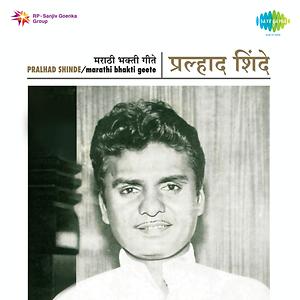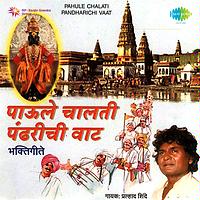

He also wrote several abhangs (devotional poems), narratives and minor works that dealt with the Bhagavata Purana He wrote Eknathi Bhagwat, Bhavarth Ramayan, Rukmini Swayamwar Hastamalak, and Bharud.

He made available an authentic, edited version of Dnyaneshwari, which had been forgotten after the Islamic invasion of Deccan. The Warkari saint-poet Eknath (1533–1599), the main successor of Dnyaneshwar, was a major Marathi literary figure during this period. There was relatively little activity in Marathi in the early days of the Bahmani Sultanate (1347–1527) and the Bijapur Sultanate (1527–1686). However, most linguistic historians now date Mukundaraja to 14th century or later: the Vivekasindhu was likely written after Lilacharita and Dnyaneshwari. Some earlier scholars dated him to the 12th century, and considered Vivekasindhu as the first literary book in Marathi, dating it to 1188. Both the works deal with the Advaita philosophy. Namdev composed religious songs in Marathi as well as Hindi some of his Hindi compositions are included in the Sikh holy book, the Guru Granth Sahib.Īnother early Marathi writer was Mukundaraja, who wrote Vivekasindhu and Paramamrita. Namdev, the Bhakti saint and contemporary of Dnyaneshwar is the other significant literary figure from this era. Bhavarth Deepika is a 9000-couplets long commentary on the Bhagavad Gita. His major works are Amrutanubhav and Bhavarth Deepika (popularly known as Dnyaneshwari). ĭnyaneshwar (1275–1296) was the first Marathi literary figure who had wide readership and profound influence. Nalopakhyana, Rukminiswayamvara and Shripati's Jyotisharatnamala (1039) are a few examples.īhaskarabhatta Borikar of the Mahanubhava sect is the first known poet to have composed hymns in Marathi. During the reign of the last three Yadava kings, a great deal of literature in verse and prose, on astrology, medicine, Puranas, Vedanta, kings and courtiers were created.

The early Marathi literature was mostly religious and philosophical in nature, and was composed by the saint-poets belonging to Mahanubhava and Warkari sects. However, there is no evidence that the Yadava royal court directly supported the production of Marathi literature with state funds. The Yadavas did regard Marathi as a significant language for connecting with the general public, and Marathi replaced Kannada and Sanskrit as the dominant language of the inscriptions during the last half century of the Yadava rule. The early Marathi literature emerged during the Seuna (Yadava) rule, because of which some scholars have theorized that it was produced with support from the Yadava rulers. However, the earliest records of actual literature in Marathi appear only in the late 13th century. Yadava period ĭnyaneshwar as imagined by the Ravi Varma pressĮpigraphic evidence suggests that Marathi was a standard written language by the 12th century. However, there is no record of any actual literature produced in Marathi until the late 13th century. These inscriptions suggest that Marathi was a standard written language by the 12th century. A 2-line 1118 CE Marathi inscription at Shravanabelagola records a grant by the Hoysalas.

1012 CE stone inscription from Akshi taluka of Raigad district, and a 1060 or 1086 CE copper-plate inscription from Dive that records a land grant (agrahara) to a Brahmin. The earliest Marathi-only inscriptions are the ones issued during the Shilahara rule, including a c. Several inscriptions dated to the second half of the 11th century feature Marathi, which is usually appended to Sanskrit or prakrit in these inscriptions. Marathi, a derivative of Maharashtri, is probably first attested in a 739 CE copper-plate inscription found in Satara. A committee appointed by the Maharashtra State Government to get the Classical status for Marathi has claimed that Marathi existed at least 2300 years ago. The earliest example of Maharashtri as a separate language dates to approximately 3rd century BCE: a stone inscription found in a cave at Naneghat, Junnar in Pune district had been written in Maharashtri using Brahmi script. Maharashtri was an offshoot of Vedic Sanskrit. Maharashtri Prakrit was the southern Prakrit that was spoken in the banks of Narmada and Godavari.


 0 kommentar(er)
0 kommentar(er)
